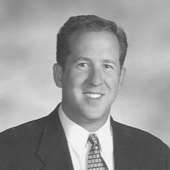- Keeping government accessible (8/19/16)
- Fighting for reliable rural flights (9/18/15)
- The status of our economy (7/11/14)
- Holding Japan accountable in trade negotiations (5/30/14)
- Solutions for our budget and the economuy (4/18/14)
- Religious freedom must be protected (3/28/14)
- Protecting American interests through trade (1/24/14)
Opinion
Taking count of rural America
Friday, May 29, 2009
"Representatives ... shall be apportioned among the several states which may be included within this Union, according to their respective Numbers...The actual Enumeration shall be made within three Years after the first Meeting of the Congress of the United States, and within every subsequent Term of ten Years, in such Manner as they shall by Law direct."
* U.S. Constitution, Article I, Section II.
The 2010 Census will mark the 23rd Census in our nation's history. Although the manner in which the data is collected has evolved over time, the purpose of the Census remains the same -- to determine the number of persons living in the United States.
The Census is important for a number of reasons: it determines the distribution of more than $300 billion annually of government funding for critical community services; the information gathered helps determine locations for schools, roads, hospitals and senior citizen centers; and it directly impacts your voice in Congress.
The Census is used to apportion seats within the U.S. House of Representatives. That data is further used to determine the boundaries of congressional districts within a given state.
While the original intent of the Census is still vital to the conduct of our government, the count of our country's residents has become more and more essential to the future of our rural communities.
The information your neighbors and you provide to the U.S. Census Bureau is used by federal, state, and local governments to assess the current and future needs of your community. Census data provide a snapshot of every community throughout the nation and are the framework for funding schools and libraries, telecommunications services, health care, and other business and economic development initiatives which are so critical to the health and sustainability of rural America.
As competition increases for both government and private resources, it is imperative every rural American stand up and be counted during the 2010 Census. For rural states like Nebraska, an accurate count can make a major difference.
Following the 2000 Census, Nebraska's total population was more than 1.7 million people, with each of Nebraska's three congressional districts representing approximately 570,000 people. Some projections for the 2010 and 2020 Census show Nebraska's population not keeping pace with growth in other urban areas of the country.
Census questionnaires will be delivered or mailed to households via U.S. mail in March 2010. In the weeks and months after, Census takers will begin going door-to-door to visit households which have not returned Census information.
In rural communities especially, this door-to-door counting often proves difficult and time-consuming and can result in under-counting, which in turn means rural areas could get left out in the cold.
With only 10 questions, the 2010 Census questionnaire is one of the shortest in the Bureau's history and is estimated to take just 10 minutes to complete. By law, the Census Bureau cannot share an individual's census questionnaire responses with anyone, including other federal agencies and law enforcement entities. In other words, all personal information in the Census is kept strictly confidential.
The Census is a constitutional exercise which is fundamental to our democracy, and I hope everyone takes the time to take part in the Census by returning their forms and encouraging their friends and family to do the same. Our way of life could very well depend on all of our participation.

